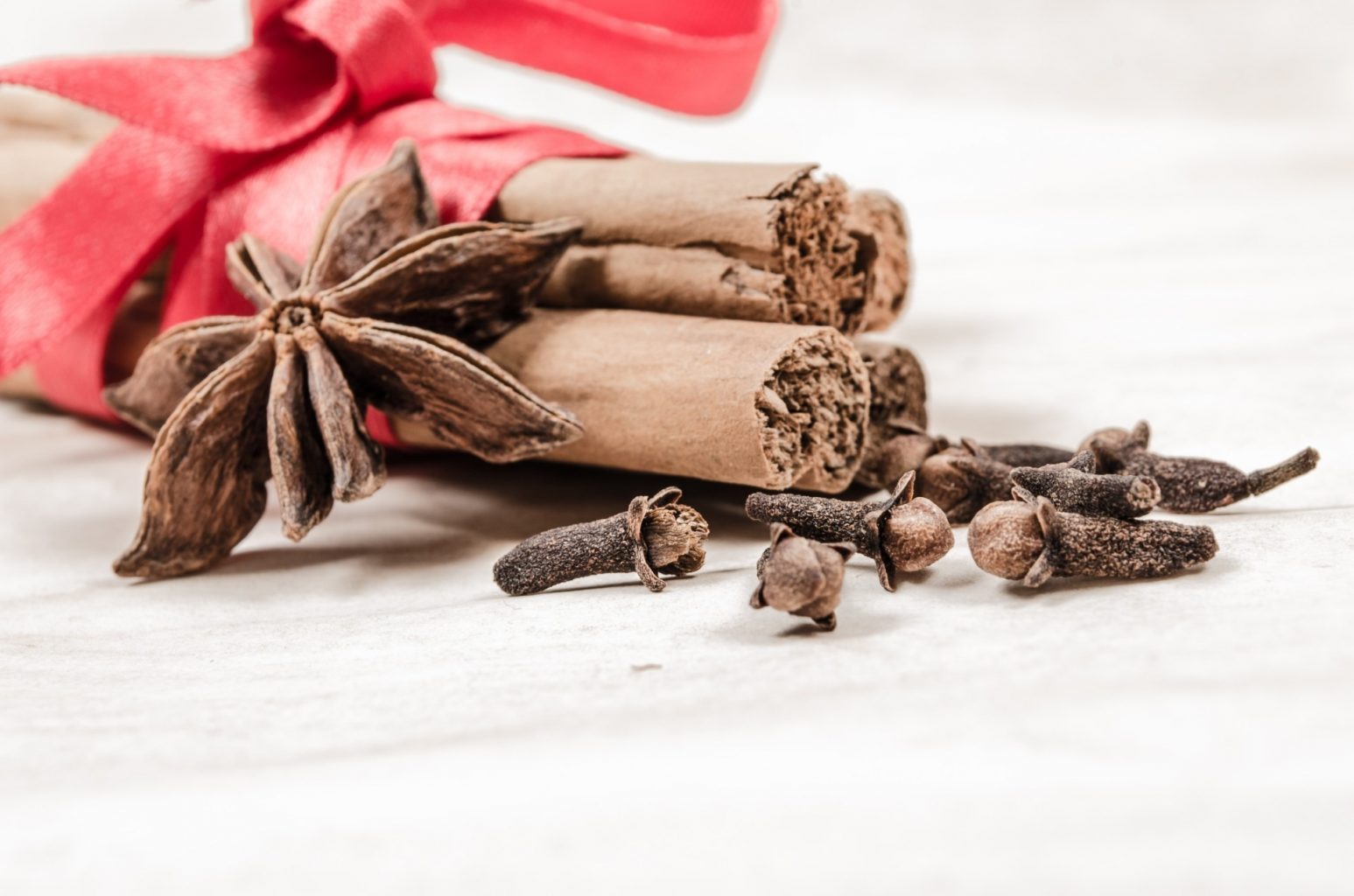Bon Appetit - Just Plain Good Food
It is beginning to smell a lot like Christmas

by Tammera J. Karr, PhD
One of the magical things about this time of year are the smells – cinnamon, cardamon, nutmeg, clove, allspice, ginger, fruit fillings and festive colors swirled around on cookies. Many of these powerful aromas stimulate memories and affect brain chemistry in positive ways.
All of these spices that add to the flavor of the winter holiday season have a warming quality, and in medieval times they were valuable for their food preservation effects. Known as “pie spices,” these flavors are indeed wonderful compliments to pies and other baked goods, but they’re also excellent companions to root vegetables, roasted meats, sauces, gravies and more. When flavoring, it helps to think of allspice, cinnamon, and nutmeg as sweet; cardamom, cloves, ginger and star anise as pungent; and coriander as peace-making.
The flavors we call Spices’ come from the volatile oils they contain in the seed, berry, and bark. These oils dissipate when they are left out in the open air or a bad quality storage containers. Spices should be stored in airtight and tinted glass containers away from light, heat, and humidity. Whenever possible, buy small quantities and grind your whole spices to ensure fresh flavor.
 According to A Guide to Buying and Cooking with Winter Spices
According to A Guide to Buying and Cooking with Winter Spices
Ginger has been flavoring foods and beverages from antiquity forward. Ginger is versatile with a range of flavors from fresh, zingy and lemony to spicy and hot. It is one of the oldest Asian spices. Gingerbread, as we know it today, descends from Medieval European culinary traditions. Ginger cookies feature prominently on Northern European Christmas tables. Of all the Christmas pastries, the gingerbread cookie was one the one most loved by early American children. A large part of gingerbreads popularity hinged on gingerbread being cheap, and easy to make; a small batch would yield many cookies, and gingerbread dough stood up well under the vagaries of both brick-oven and cook-stove baking.
Cloves are the dried flower buds of a tree native to Indonesia. This aromatic spice is found in kitchens across the globe. The word clove comes from the Latin clavus, which means “nail.” Its “nail heads” can be spiked into foods for a dramatic presentation. Ground cloves lose their volatile oils quickly, so it’s best to grind your own in a coffee grinder. Use pungent cloves sparingly when cooking. They are perfect for roasted meats, baked beans, split pea or bean soups, citrus, stewed and baked fruits, desserts, and pickles.
Allspice is the cured berry of an evergreen tree found in Jamaica. When buying this spice look for dark, red-brown spheres with a rough surface. You should hear the inner seeds rattle when shaken. Ground allspice should be rich, dark brown, highly aromatic but not musty, and a bit oily, never dry. When using them for cooking select whole berries to avoid adding a brown tint to foods. Try allspice in sweet baked goods, Jamaican jerk seasoning, tomato and barbecue sauces, seafood, red meat and curry blends.
Cardamom is called the “Queen of Spices” in its native India. It comes in brown and green forms. Green cardamom is the traditional winter spice. Cardamom pods should be whole, slightly oily and lime green, not pale.
The flavor of cardamom is perfect for sweet and savory foods, especially curries and rice, and citrus. Ground cardamom loses its volatile oils and flavor rapidly. For the best flavor add whole pods, slightly bruised, to dishes cooked with liquids (remove pods before serving). Or split pods to remove the sticky, black seeds and grind seeds in a coffee grinder.
Star Anise as winter spices is beautiful and has a strong licorice flavor. Popularized in the 16th century, it is a relatively new spice to many parts of the world coming from China, Vietnam, India, Japan and the Philippines. Look for whole, reddish-brown stars with little splits that contain a shiny brown seed. When popped, the seed should release a strong, spicy aroma. Ground star anise should be fine and dark; purchase it in small quantities to retain freshness. Star anise pairs perfectly with many savory Asian dishes, most famously Peking duck. It also works well with pork.
Do It Yourself Spice Blend
—Adapted from The Spice and Herb Bible by Ian Hemphill
This blend is the popular way to flavor fruitcakes, shortbread, sweet pies and all kinds of delectable pastries. Mix the following ground spices together:
4 teaspoons coriander seed
2 teaspoons cinnamon
2 teaspoons cassia
½ teaspoon nutmeg
¼ teaspoon green cardamom seeds
½ teaspoon allspice
½ teaspoon ginger
¼ teaspoon cloves
To impart a deliciously aromatic, sweet spice flavor to cakes, biscuits, cookies and pastries, add 2 teaspoons of mixed spice per cup of flour to the dry ingredients. Fruitcakes, mince pies, and rich or sweet foods require up to twice the amount if a distinct flavor is wanted.
Happy Holiday Season filled with Spice, laughter, and love.
Resources:
https://foodtimeline.org/christmasfood.html
http://www.motherearthliving.com/Cooking-Methods/buying-cooking-with-winter-spices


